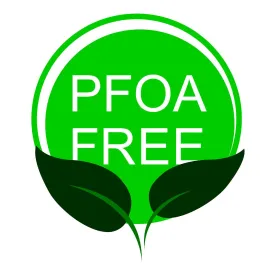In a previous article, we examined the EPA’s recent findings with respect to two types of PFAS (PFOA and PFOS) and their effects on human health. We predicted that the scientific findings that the EPA submitted to the Scientific Advisory Board (SAB) will lead to significantly lower enforceable limits for PFOA and PFOS than initially believed. The EPA’s findings, however, also suggest the possibility that the EPA will set such a low level for these two types of PFAS that the plaintiffs’ bar will finally have the support that it needs to present the “no safe level of PFAS” theory to juries in products liability cases. Businesses with current or legacy uses of PFOA or PFOS in the United States absolutely must consider the enormous impact that the EPA’s upcoming findings will have on potentially decades of litigation.
Science Advisory Board Data
Following in the footsteps of its PFAS Strategic Roadmap in October 2021, on November 16, 2021, the EPA released a press release indicating that it had submitted to the agency’s Science Advisory Board (SAB) draft scientific documents regarding the health effects of certain types of PFAS, most notably PFOA and PFOS. Significantly, the EPA’s data and scientific documents indicate that “negative health effects may occur at much lower levels of exposure to PFOA and PFOS than previously understood and that PFOA is a likely carcinogen.”
More specifically, the EPA states in the documents submitted to the SAB that the maximum dose that a person can have of PFOA per day from drinking water without having adverse health effects is 0.0000000079 mg/kg. Similarly, for PFOS, the limit is 0.0000000015 mg/kg per day. Earlier this fall, the EPA also put forth proposed toxicity assessments for three other PFAS types, in which they recommended daily doses per kilogram of body weight as follows: GenX (0.000003 mg/kg), PFBS (0.00003 mg/kg) and PFBA (0.01 mg/kg).
Following peer review, this information will be used to inform health advisories and the development of Maximum Contaminant Level Goals and a National Primary Drinking Water Regulation for PFOA and PFOS (as well as potentially GenX, PFBS, and PFBA). The EPA has reiterated several times that it is committed to developing a PFAS National Primary Drinking Water Regulation for publication in Fall 2022.
“No Safe Level of PFAS” In the Courtroom
The EPA’s proposed toxicity assessments for PFOA and PFOS, in particular, are so incredibly low, that many question whether readily accessible technology currently exists that would allow testing at such low levels. Nevertheless, what should catch the eyes of businesses with current or legacy PFOA and PFOS use concerns is the fact that the levels are so far below “1.0” that they, for all intents and purposes, may amount to a “0.0” level of acceptable daily dose for ingestion. This is especially true of PFOA, which may have a “likely carcinogen” classification, and would force the EPA’s hand to recognize (albeit perhaps not explicitly) a “no safe level” for PFOA.
If the EPA’s findings submitted to the SAB were to be finalized, experts could then theoretically begin to apply the “acceptable” or “safe” dose levels to individual plaintiffs in lawsuits to determine whether certain PFOA or PFOS containing products exceeded the dose for the individual plaintiffs. In reality, with doses at such low levels, these experts would likely testify that with permissible doses so low, the EPA is in effect signaling that there is “no safe level of PFAS” and, by implication, any product with any level of ingestible or absorbable PFAS in them are inherently dangerous to consumers.
For anyone who may raise a skeptical eye to these stepping stones for legal arguments, one needs look no further to currently ongoing toxic torts litigations to see that this same pattern was followed before – namely, asbestos, benzene, lead, and silica, to name a few. The asbestos litigation, in particular, has been ongoing for over 50 years and while the EPA currently has Permissible Exposure Limits based on a time-weighted average for a daily “dose” of asbestos fibers that is “permissible” under OSHA, the limit (0.1 fibers per cubic centimeter of air) are traditionally seen by some as sufficiently low enough that there is, in effect, no known safe level of asbestos. While there are nuances to this position and counterpoints by those who hold opposing viewpoints, the “no safe level” soundbite has nonetheless rung through courtrooms in front of juries for years now. In the asbestos litigation, the asbestos mining, milling, and manufacturing companies were the first to file for bankruptcy protection, but the last 30 years has seen the path of the litigation change to further downstream companies in the asbestos use chain, with well over 100 companies having now filed for bankruptcy due to the litigation burdens.
While it is certainly far too early to determine whether PFAS will take the same path as the asbestos litigation, it is not unreasonable to assume that there will be similarities between the asbestos litigation and what we predict is the coming wave of PFAS products liability litigation. While science is adding more peer-reviewed studies regarding PFAS on a steady basis, the EPA’s own findings that were submitted to the SAB may be enough for some plaintiffs’ counsel to begin testing the waters in certain jurisdictions with respect to PFAS products liability lawsuits.




 />i
/>i
